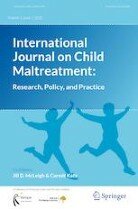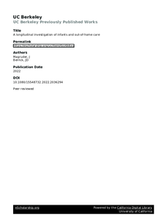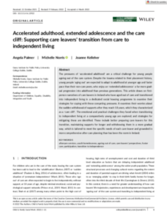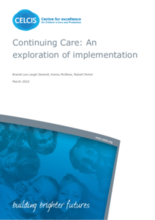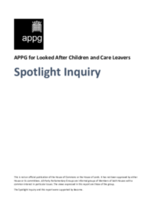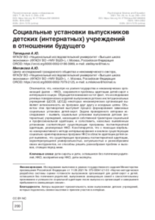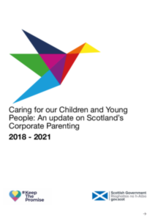Displaying 11 - 20 of 230
The Care Leavers, COVID-19 and Transition from Care (CCTC) study explored how COVID-19 impacted on care leavers’ lives and their pathways out of care; examining where young people went, what services and support they received, and how young people got on.
This study, based on interviews with 10 Aboriginal and Torres Strait Islander youth from Victoria and Western Australia (who were a sub-set of a larger study of 34 care leavers), examined their transition experiences and outcomes in relation to accessing stable and affordable housing. While all care leavers spoke of poor or non-existent transition planning, Aboriginal and Torres Strait Islander participants were more likely to report incidences of homelessness and more complex experiences in a range of areas. Importantly, the group identified a need for culturally appropriate service models which built on and enhanced cultural and kinship connections.
This study offers a longitudinal examination of a population-based cohort of infants born in 2001 who entered care during the first year of life and who were followed through multiple care episodes until age 18. Findings suggest that using single, first episode data overstates the proportion of children who successfully reunify and understates the proportion of children who are adopted, return to care, or live with guardians.
This article draws on first-person narratives of care leavers in Ireland who have aged out of care and transitioned into independent living in a dedicated social housing programme to examine their strategies for coping with these competing pressures.
This research aims to identify and better understand what it is that enables and challenges the necessary improvements needed at national and local level to support children and young people to successfully transition to adulthood.
This APPG report puts a spotlight on what ‘community’ means to care-experienced people and explores what might be done to help strengthen important community relationships and connections for current and future generations of children in care. The report contains 15 practical recommendations for changes that could be made in the near future to improve the ways in which the care system supports young people to connect with their communities and highlights 5 broader areas where the authors feel serious reform is required that the Department for Education (and others) should consider in greater detail.
“Engaging Fathers – Putting Lessons Into Practice” is a three-part series to share strategies implemented from three of the five State or county agencies: Los Angeles County, California; Hartford, Connecticut; and Prowers County, Colorado.
“Engaging Fathers – Putting Lessons Into Practice” is a three-part series to share strategies implemented from three of the five State or county agencies: Los Angeles county, California; Hartford, Connecticut; and Prowers county, Colorado. Part one focuses on the strategies developed within Hartford, Connecticut.
Отмечается, что, несмотря на усилия государства и некоммерческих организаций (далее – НКО), сохраняются проблемы адаптации детей-сирот к интеграции в социум. Обращается внимание на тот факт, что исследование речевых поведенческих моделей выпускников детских институциональных учреждений (ЦССВ, ЦССД) некоторых некоммерческих организаций выявляет антиномичность их программ друг другу и исходным целям. Объектом этих противоречий выступает процесс формирования зависимых социальных установок детей-сирот. Задача проведенного авторами исследования – выявить социальные установки выпускников детских (интернатных) учреждений, касающиеся собственной траектории социальной и профессиональной адаптации, и сопоставить, насколько выявленным установкам соответствуют существующие программы постинтернатной адаптации, реализуемые НКО.
Despite the efforts of the state and non-profit organizations (hereinafter — NPOs), the problems of orphans’ adaptation and integration into the society persist. Studies of speech behavioral models in graduates of child care institutions of some non-profit organizations reveal the antinomic nature of their programs and goals. These contradictions revolve around the process of formation of dependent social attitudes in orphaned children. The task of this research is to assess the role that NPOs play in the formation of certain social attitudes of graduates of child care (boarding) institutions (ex-orphanages).
Putting this second national report on corporate parenting before the Scottish Parliament in line with their duties under Children and Young People (Scotland) Act 2014, the Scottish Government provides an overview of corporate parents’ activities over the last three years. The report aims to become a useful learning resource for corporate parents.


